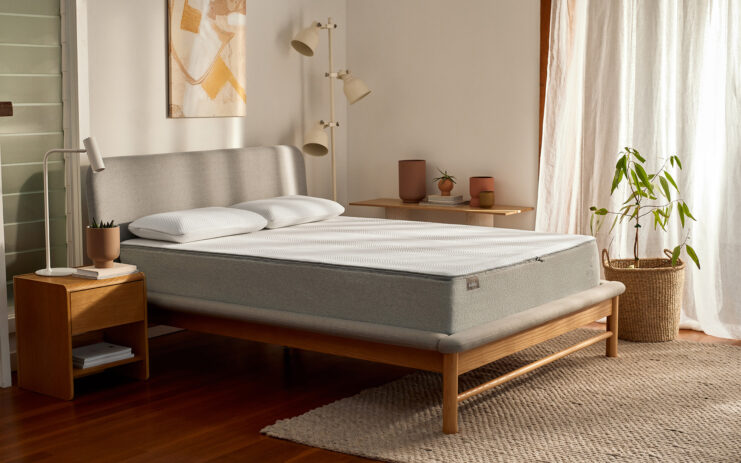Selecting the appropriate mattress size and understanding bed dimensions are crucial steps in achieving a comfortable and restful night’s sleep. Mattress sizes range from small single beds to expansive California kings, with various standard dimensions tailored to different sleeping needs and room configurations.
Each size is designed to accommodate different spaces, lifestyles, and preferences, with options suitable from a child’s first bed up to the luxurious expanse preferred by many couples.
Key Takeaways
- Mattress size selection impacts sleep quality and bedroom functionality.
- Standard mattress dimensions cater to a range of space and user needs.
- Alternative sizes provide options for non-standard spaces and user preferences.
What Are The Common Sizes?
Choosing the right mattress size is critical for comfort and room aesthetics. One must consider both the dimensions of the mattress and the size of the room it will occupy.
The Size Guide
When selecting the right model, the first thing to look at is the mattress size dimensions. A standard dimensions chart helps consumers compare sizes before purchase. The following are common mattress sizes:
- Twin: Approximately 38 inches wide by 75 inches long
- Twin XL: Roughly 38 inches wide by 80 inches long
- Full/Double: About 54 inches wide by 75 inches long
- Queen: Typically 60 inches wide by 80 inches long
- King: Usually 76 inches wide by 80 inches long
- California King: Often 72 inches wide by 84 inches long
A tape measure can be invaluable when verifying if a chosen mattress will fit the intended bed frame or room.
Bed Size and Room Dimensions
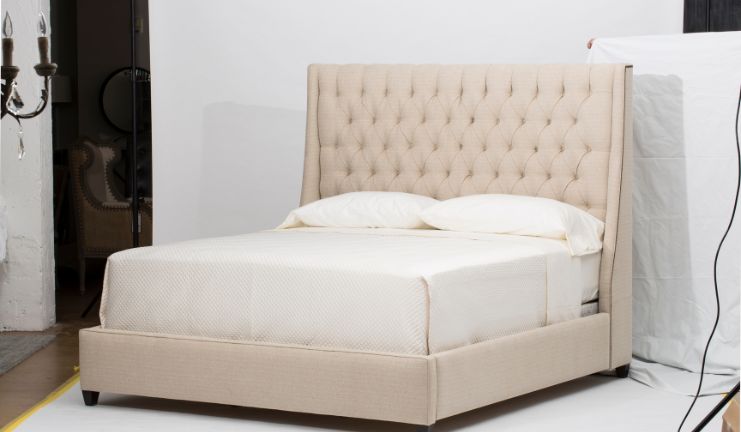
The bed dimensions must be balanced with the room size to ensure a harmonious layout. One should allow for at least 2 to 3 feet of walking space around the bed for ease of movement.
For example, for a queen-size mattress, a room size of at least 10 by 10 feet is often recommended. It’s advisable to measure the room with a tape measure and refer to a size chart to determine the maximum mattress size that can comfortably fit within the space. This ensures both functionality and aesthetic appeal are maintained.
When selecting a mattress, it is crucial to consider the size that best fits one’s space and sleeping needs. Below are the standard dimensions for common mattress sizes.
Twin Size
A Twin size mattress typically measures 38 inches wide by 75 inches long. It is ideal for children or single adults with limited space. Due to its compact size, a Twin size is often used for bunk beds, small bedrooms, and guest rooms.
Full Size
The Full size, also known as a double bed, is 54 inches wide by 75 inches long. It affords single sleepers more room than a twin and can accommodate two people, though the space might be snug.
Queen Size
A Queen size mattress is one of the most popular options for couples, providing ample space with dimensions of 60 inches by 80 inches. It offers a comfortable balance of space efficiency and sleeping area, suitable for most bedrooms.
King Size
The King size measures 76 inches wide by 80 inches long, equivalent to the size of two Twin XL mattresses side by side. This spacious size is favorable for couples who prefer a luxurious amount of space or have children or pets sharing the bed.
California King
A California King model is narrower and longer than a standard King, with dimensions of 72 inches by 84 inches. It caters to those who require extra length, particularly individuals taller than six feet, and is a substantial presence in larger bedrooms.
What Are Some Alternative Sizes?
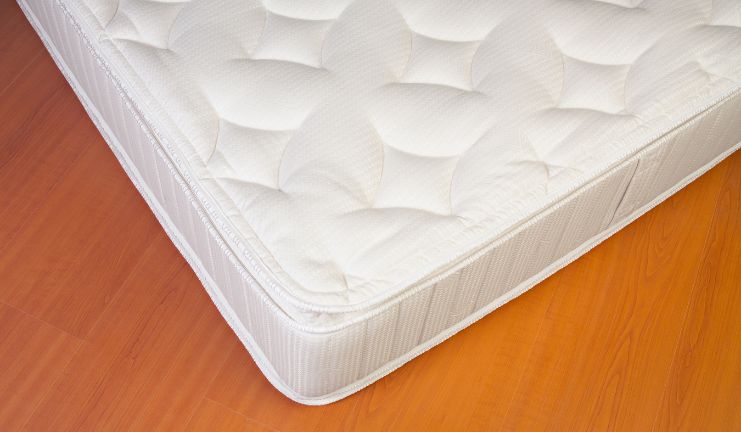
Beyond the standard sizes lie the specialty and alternative options designed to meet specific needs, including larger sleep spaces or fitting unique bed frames like those in RVs.
Twin XL
The Twin XL Mattress is longer than a standard twin, designed specifically for taller individuals needing extra legroom. Its dimensions are typically 39 inches wide by 80 inches long, making it a prime choice for college dormitories and taller teenagers.
Full XL
A Full XL Mattress offers an additional five inches in length compared to the full mattress, measuring 54 inches wide by 80 inches long. This size is beneficial for single sleepers who require more space to stretch out comfortably.
Olympic Queen
The Olympic Queen Mattress is a wider version of the standard queen, providing an extra six inches of width. The dimensions are 66 inches wide by 80 inches long, giving couples more room to sleep without upgrading to a king-size bed.
Alaskan King
An Alaskan King Mattress is one of the largest mattress sizes available, perfect for families who co-sleep or those desiring expansive luxury. Its massive size spans 108 inches wide by 108 inches long, offering ample space for multiple occupants.
RV and Custom
RV and Custom vary to fit within the constrained spaces of recreational vehicles. Sizes like RV King, RV Queen, and custom dimensions cater to the unique size requirements of an RV bed frame, ensuring a comfortable sleep even while on the road.
The typical RV King measures around 72 inches wide by 80 inches long, while the RV Queen is slightly smaller, generally around 60 inches wide by 75 inches long.
How To Choose The Right One for Your Needs?

Finding the perfect one depends on personal needs and preferences, including the size of the room, the number of sleepers, and the physical requirements of the individual or couple.
For Couples
For couples seeking a comfortable night’s sleep, queen bed dimensions (60″ x 80″) offer ample space without overwhelming average-sized bedrooms. Those requiring more room may opt for a king bed (76″ x 80″) or a California king bed (72″ x 84″), which provides extra length for taller individuals.
For Solo Sleepers
Single sleepers often find twin beds (38″ x 75″) or twin XL beds (39″ x 80″) suitable for their needs. The latter is ideal for taller adults, granting additional legroom. For more space, full beds (54″ x 75″) are a step up and provide extra comfort without taking up as much room as a queen bed.
For Kids and Teens
Mattresses for children and teenagers must accommodate their growth. A twin bed serves well initially, but as they age and grow, a twin XL bed or a full bed might be better suited to ensure they have sufficient space throughout their teens.
For Larger Individuals
Larger individuals or those who prefer extra space may consider a king bed to avoid feeling constricted. For taller people, a California king bed, with its added length, ensures that comfort is not compromised, making it an excellent choice for ensuring restful sleep.
Materials and Construction
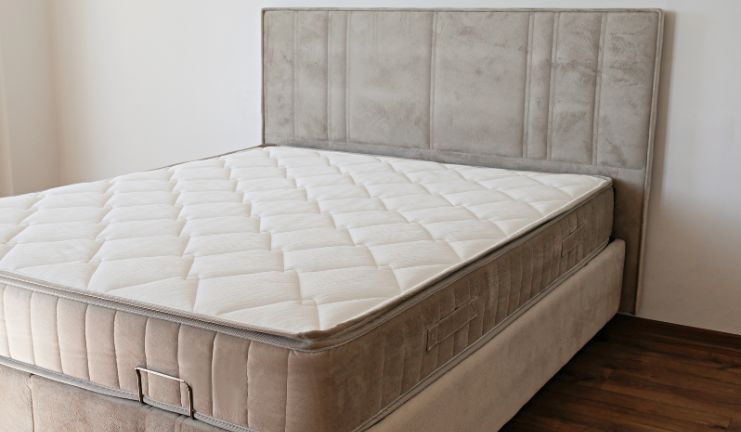
When selecting a mattress, understanding the materials and construction is crucial as they directly affect comfort, support, and durability. Each type of mattress offers distinct benefits and is composed of different materials that cater to various sleeping preferences.
Foam
Foam mattresses are known for their comfort and pressure relief capabilities. The construction typically involves several layers of foam, with a high-density foam base for support, and memory foam or softer foams on top for comfort. Memory foam mattresses, in particular, are celebrated for their ability to contour to the body, providing excellent pressure relief.
Innerspring
These mattresses have a construction featuring a coil support system that provides a traditional bounce and strong support. Above the innerspring coils, layers of foam or fiber can be added for comfort. The gauge and arrangement of the coils can vary, influencing the firmness and overall feel of the mattress.
Latex
Latex mattresses are appreciated for their durability and natural hypoallergenic qualities. They are constructed mostly from latex foam, which comes from the sap of rubber trees. Latex offers a unique combination of support and pressure relief and can be found in both Dunlop and Talalay varieties, each with a different feel.
Hybrid
Hybrid mattresses combine layers of foam with an innerspring system to deliver a balance of support, comfort, and durability. They often feature a coil support core topped with layers of memory foam or latex foam, aiming to provide the pressure relief of foam mattresses with the support and breathability of innersprings.
Additional Features and Tips
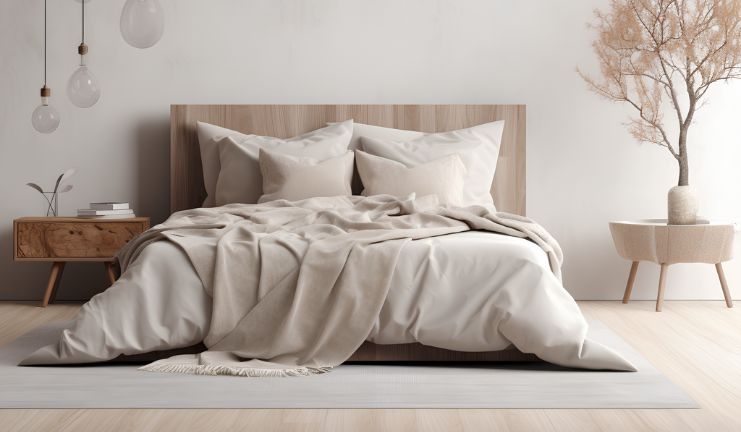
When shopping for a mattress, it’s important to consider features such as thickness and firmness, the necessity for compatible bedding and accessories, and specific requirements for allergy sufferers to ensure sleep comfort and pressure relief.
Thickness and Firmness
The thickness of a mattress contributes significantly to its overall comfort and support. Typically measured in inches, mattress thickness can range from 6 inches (more basic) to over 14 inches (high-end luxury).
In terms of firmness, mattresses are generally rated from soft to extra firm. A person’s weight and preferred sleeping position will determine the ideal firmness level, with firmer options often providing better pressure relief for back and stomach sleepers.
Bedding and Accessories
Selecting appropriate bedding and accessories is vital for maximizing the potential of a new mattress. Deep-pocket sheets might be needed for thicker mattresses, and a mattress protector is recommended for maintaining cleanliness. Additions such as mattress toppers and pads can further adjust the comfort level and extend the lifespan of the mattress.
For Allergy Sufferers
For allergy sufferers, hypoallergenic materials are integral to a restful night’s sleep. Mattresses constructed with natural fibers or designed with allergy sufferers in mind can drastically reduce allergens.
It’s also advisable to consider mattresses that are certified to be resistant to dust mites, mildew, and mold, which are common irritants that can disrupt sleep.
The Buying Guide
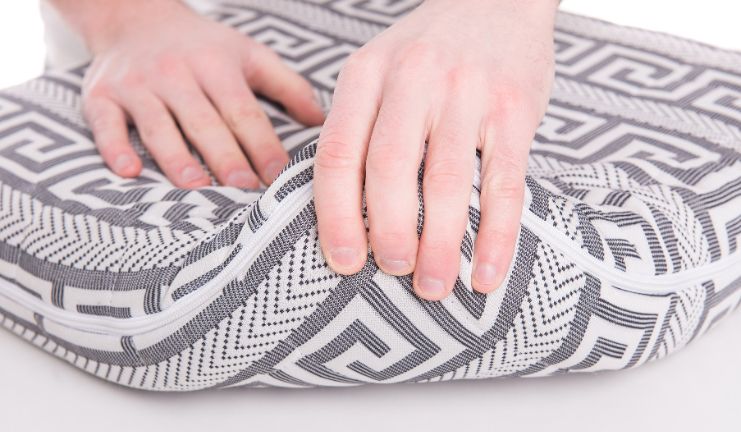
When selecting a mattress, it’s essential to consider the price range, location of purchase, and size compatibility with your space. Each factor plays a pivotal role in ensuring the right mattress choice for sound sleep and financial peace of mind.
Budgeting Tips
Finding a mattress that offers value within one’s budget is crucial. Mattress prices vary greatly, ranging from affordable options that might cost a few hundred dollars to luxury models which can exceed thousands.
Consumers should decide on a budget that reflects their financial constraints while accounting for the longevity and quality of the product.
Where to Buy?
Mattresses are widely available through various retailers. Shoppers can opt for brick-and-mortar stores in their local area or consider the convenience of online merchants.
Physical stores allow a firsthand evaluation of the product, whereas online purchases may offer a broader range of options and competitive pricing.
Measure Space Accurately
Before purchasing a mattress, it is crucial to accurately measure the available space. One should use a tape measure to determine the maximum width and length the room can accommodate.
For instance, a Twin XL might be ideal for a small room or bunk beds, while ensuring solo sleepers can stretch out comfortably without compromising on space.
FAQs
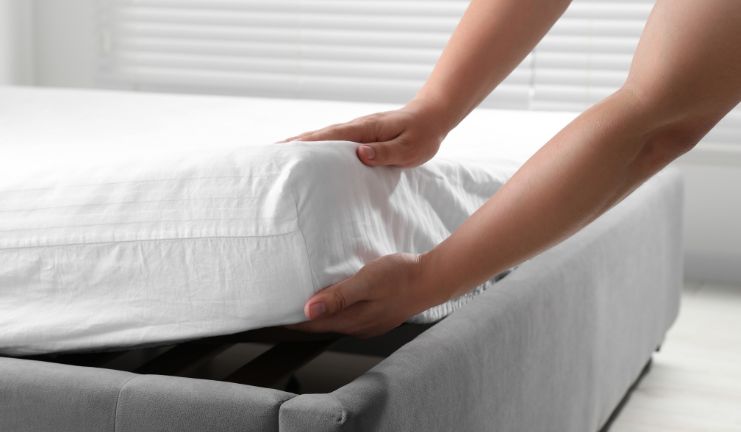
How do I choose the right bed for my room?
To choose the right bed for your room, you should consider the size, style, and function of the bed. You should measure your room and compare it with the dimensions of different bed sizes, such as twin, full, queen, or king. You should also think about the design and features of the bed, such as the frame, headboard, storage, and comfort.
What is the most popular mattress size?
The most popular mattress size is the queen size, which measures 60 by 80 inches. It offers enough space for couples or single sleepers, and fits well in most bedrooms.
How do I know if my bed will fit in my room?
To know if your bed will fit in your room, you should measure your bed and your room. You should also measure the space around the bed, such as the clearance, the doors, the closets, and the drawers. You should have at least two feet of walking space around the bed to avoid knocking into walls and furniture. You can use a tape measure and a pen and paper to record the measurements.
How big should the bed be compared to the room?
There is no definitive answer to how big the bed should be compared to the room, but a general rule of thumb is to have a 3:1 ratio of bedroom to bed. This means that for every three parts of bedroom, you should have one part of bed. This ratio can help you balance the comfort and functionality of your sleeping space. However, you can also adjust the ratio according to your personal taste and needs.
Conclusion
As you can see, there is a wide range of models to choose from. Therefore, you should never rush with your decision. The best approach is to consider your needs, budget, and technical features like the size, firmness, allergy resistance if necessary, and to compare different models, like California King vs. King.

